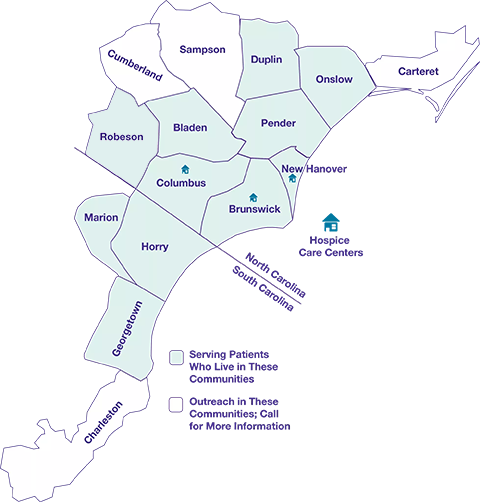
Palliative care, often confused with hospice care or palliative medicine, is a type of healthcare that provides support for patients and their families. This is for patients suffering from serious illnesses. It can help with pain and other symptoms. Palliative care may be offered in many settings. It may be offered in a hospital, a skilled nursing facility or at home. It may also be used alongside curative treatments, depending on how severe the illness is.
To provide support for families and patients, interdisciplinary palliative teams can be used. These teams might include social workers (physiotherapists or occupational therapists), physicians, nurses, and social workers. This team may include the patient's family and friends.

The patient can receive palliative healthcare at any stage of life. You can initiate palliative care at any time, whether the patient is undergoing curative or end-of-life treatment. Symptom management is the main focus of palliative care, but the patient's family and friends also need to be included in the assessment. Palliative treatment is provided in collaboration with a number of health professionals. This may include the administration of medications, nutritional adjustments, and relaxation techniques.
Palliative care is a natural extension of primary care. It involves coordination across care pathways including primary, specialty, tertiary. It also places emphasis on quality of care. Palliative care teams will evaluate a patient's condition and provide basic nursing care. They also help to manage pain and symptoms. In addition, caregivers can be trained to provide additional support for the patient, including emotional support, subcutaneous injections to relieve pain, and physical support.
Palliative care teams listen to patients' concerns and will also consider their financial and emotional resources. The team may also consider whether the patient has made advance medical directives, and if so, whether they are being honored. They might also review the patient’s financial situation and any conflicts among primary caregivers. They might also have to decide when to end their care.
While hospitalization might be necessary for an aggressive intravenous therapy, the patient may not need to be admitted. Fluids can be given under the skin to the patient if they are at home. This allows them to maintain their kidney function and overall comfort. In addition, a Carer Supports Needs Assessment Tool can be used to help the patient and family members identify their specific needs. This tool can indicate that the patient or family needs additional support.

Emotional support is one of the most important aspects in palliative care. It is important that the patient's emotions are identified at every stage of treatment. The medical treatment will not be effective if the patient's family is not present. It could also make the symptoms worse.
FAQ
What is the best way to get free coverage for my area's health?
You can apply for free health insurance if you qualify. You might be eligible if you qualify for Medicaid, Medicare and CHIP.
What is "health promotion"?
Health promotion is helping people live longer, stay well, and be healthier. It focuses more on preventing disease than treating it.
It includes activities like:
-
Healthy eating
-
getting enough sleep
-
exercising regularly
-
Being active and fit
-
It is important to not smoke
-
managing stress
-
keeping up with vaccinations
-
Avoid alcohol abuse
-
Regular checkups and screenings
-
How to manage chronic illness.
What does "public health" actually mean?
Public Health means protecting and improving the health of the community. Public health is the prevention of disease, injury, disability, promotion of good health, adequate nutrition, and control over communicable and environmental hazards as well behavioral risks.
What is the difference between health system and health services?
Health systems encompass more than just healthcare services. They encompass everything that happens in the overall context of people’s lives, such as education, employment, housing, and social security.
Healthcare services, on the other hand, focus on delivering medical treatment for specific conditions such as cancer, diabetes, mental illness, etc.
They could also refer to generalist primary care services provided by community-based physicians working under the supervision of an NHS trust.
What are the various health care services available?
Patients should know that they can access quality healthcare at all times. We can help you, whether you have an urgent need or a routine checkup.
We offer many types of appointments including walk-in clinics and same-day surgery. Home care visits are also available for patients who live away from our clinic. You don't have to come into our office if you are not comfortable. We'll make sure that you receive prompt care at your local hospital.
Our team includes pharmacists, dentists and nurses who all work together to provide excellent patient service. We aim to ensure that each visit is as convenient and painless as possible.
Statistics
- Over the first twenty-five years of this transformation, government contributions to healthcare expenditures have dropped from 36% to 15%, with the burden of managing this decrease falling largely on patients. (en.wikipedia.org)
- Consuming over 10 percent of [3] (en.wikipedia.org)
- The healthcare sector is one of the largest and most complex in the U.S. economy, accounting for 18% of gross domestic product (GDP) in 2020.1 (investopedia.com)
- Foreign investment in hospitals—up to 70% ownership- has been encouraged as an incentive for privatization. (en.wikipedia.org)
- The health share of the Gross domestic product (GDP) is expected to continue its upward trend, reaching 19.9 percent of GDP by 2025. (en.wikipedia.org)
External Links
How To
What are the key segments of the healthcare industry?
The healthcare industry is made up of key segments such as medical devices, pharmaceuticals and diagnostics, biotechnology, therapy, health information technology, medical equipment, and other medical devices.
Medical devices include blood pressure monitors, defibrillators, stethoscopes, ultrasound machines, etc. These products are usually designed to diagnose, prevent, or treat diseases.
Pharmaceuticals are medications that are used to treat or alleviate symptoms. Antibiotics, antihistamines (or contraceptives), are just a few examples.
Diagnostics are laboratory tests used to detect illness and injury. Examples include blood tests, urine samples, CT scans, MRI scans, X-rays, etc.
Biotechnology refers to using living organisms (such as bacteria) to produce useful substances that can be applied to human beings. You can find examples such as vaccines, insulin and enzymes.
The treatment of disease or symptoms with therapeutics is a medical procedure that humans receive. These treatments can include drugs, radiation therapy and surgical interventions.
The computer software programs called health information technology help doctors and their teams to manage patient records. It helps doctors and their teams track which medications are being used, when they should have been taken, and if they work properly.
Equipment used in the diagnosis, treatment, and monitoring of medical conditions or illnesses is called medical equipment. These include dialysis machines and pacemakers, ventilators, operating table, and ventilators.